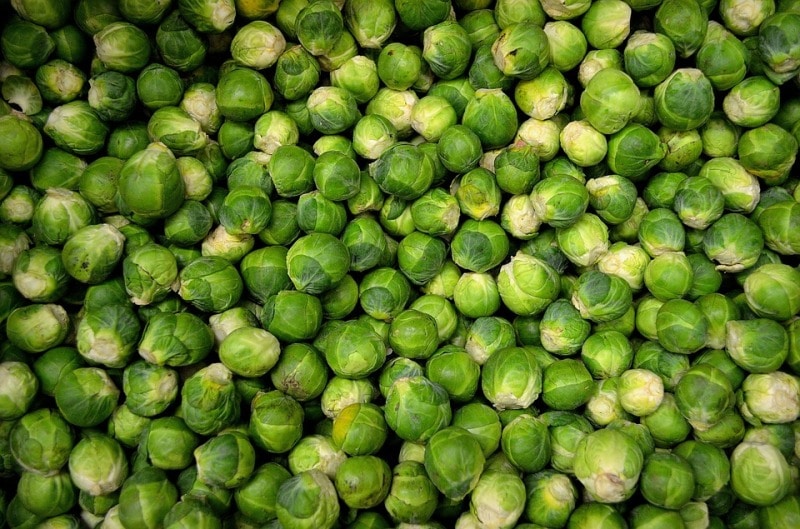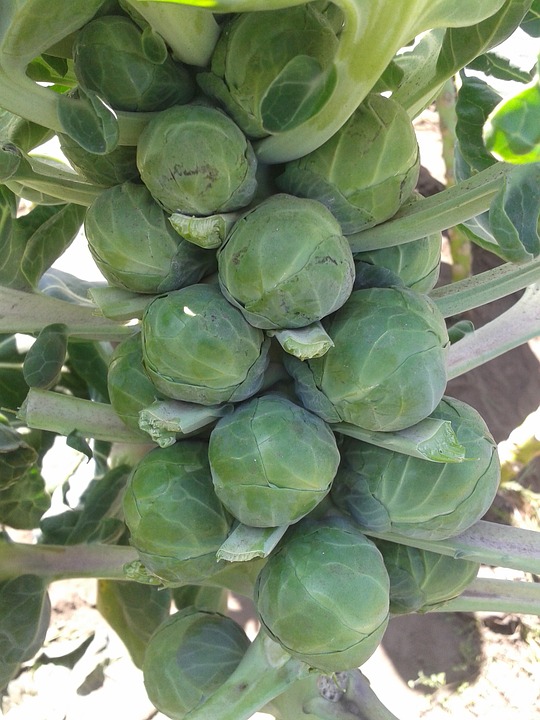Brussels sprouts growing tips in your backyard
Today, we learn the topic of brussels sprouts growing tips and techniques. Brussels Sprouts are the members of the family of Gemmifera cabbages. Brussels sprout is scientifically called as Brassica Oleracea and this is mainly grown for its buds for the sake of consumption. Brussels sprouts are the leafy vegetables which are 1.5 inches in terms of diameter and will be similar to cabbages in appearance. The Brussels sprouts are well known in Brussels.

Read: How to Grow Broccoli in Your Home Garden.
Brussels sprouts are the ones which grow very slowly and these are the winter plants which can tolerate frost. Though they are mostly grown for a late autumn harvest, these are the vegetables which will take almost 3-4 months to harvest from the time of transplantation and will do their best in the weather conditions of 7 to 22°C. In this article, we are going to discuss how to grow brussels sprouts in your backyard.
Sowing and plantation of Brussels sprouts:
- The seeds of the Brussels sprouts have to be sown in the seed pots. This should be done approximately 30 to 40 days before you decide to transplant them to your backyard. The seeds have to be planted at a depth of a ½ inch. You can place the seed pots near a window or you can also place them in a protected area in the outdoor locations as long as the temperatures during the day will be above 10°C. The process of germination will take place within 3 to 5 days.
- The transplantation of the brussels sprouts has to be started when you are planting at the time of spring. Brussels sprouts can be seeded up directly till the late summer for harvest to be done continuously.
- Start the preparation of your backyard 15 to 20 days before the plantation. The soil has to be tilled and should be mixed in the organic compost. The brussels sprouts will work their best in the organic soil which is loose and retains the moisture. They will grow their best in the complete sun but will also tolerate when kept in partial shade.
- The level of pH of your soil has to be checked. The soil has to be amended if required by making use of the right fertilizer. The brussels sprouts will love to be in the soil which has the pH level in between 6 and 6.5. The temperature of soil should be in between 20 to 25°C for their growth to be the best.
- Brussels sprouts will need to feed heavily and will also be benefited if applied calcium, boron and magnesium, specifically at the time of early growth stages.
- Now it is the time for transplantation of seedlings into your backyard. They will be ready when they are at least 5 weeks old and are at a length of 5 inches.
- The plants have to be removed from the seed pots. The root balls should be soaked in a normal plant fertilizer which is combined with water prior to planting them in your backyard. Always make sure that you are following the guidelines mentioned by the manufacturer of fertilizer for the preparation of fertilizer solution which has the right concentration.
- The plants have to be placed at a distance of 25 inches. If you see that the transplants are growing in a crooked manner and are spindly, you can even start burying them in the ground till the first leaf set so that the plants will not become heavy at the top.
Care and maintenance of brussels sprouts plants:

Read: How to Grow Watercress in the Home Garden.
- The brussels sprouts plants have to be watered at the base after the transplantation takes place. They should be kept in a well-watered state all across the growing period for the prevention of ground from getting dried up. Decrease the quantity of water two weeks prior to the harvest and let the ground get dried before you water.
- Make sure that you are watering the Brussels sprout plants in an adequate manner at the time of growth as the plants will need water for the purpose of growth and development of sprout. Anyways, the brussels sprouts will require a large quantity of water but they hate the standing water. The soils which are lighter will need to be watered more often than the soils which are heavier.
- The brussels sprouts have to be fed with a fertilizer which has lots of nitrogen for every few weeks. Stop fertilizing the brussels sprouts plants when you stop watering at the end of the growing period.
- Moreover, taking off the growing tip of the brussels sprouts plant almost a month prior to the date of the harvest will lead to the great growth of the plants as the plant will direct the energy from the growth of leaf to the development of brussels sprouts.
- You can go with the addition of the organic compost to the soil’s top around the plants on a regular basis. This will feed the brussels sprout plants and will help them by giving a barrier from weeds. The brussels sprouts will have a root system which is very shallow. So make sure that you are not disturbing the soil which is present around them.
- The area has to be weeded in a careful manner by making use of hand if required. Cabbage worms and aphids are the most common pests which will affect the brussels sprouts. The pH of the soil has to be maintained at 6.5 or more than that. This will help in the prevention of a few diseases like club root.
Harvesting brussels sprouts:

Read: How to Grow Broad Beans in Containers.
- The harvest of the brussels sprouts has to be done in a slow manner by starting it from the plant’s bottom. The maturity of the sprouts will take place from the bottom up and they will be very sweet when they are small and are closed in a tight manner.
- For the encouragement of upper sprout development, you will need to remove the growing tip of the plant at the time of summer end.
- The brussels sprouts have to be picked up when they reached a diameter of 1 inch. They have to be pinched off by making use of your fingers or you can even make use of a knife in order to cut off the buds.
- The formation of sprouts will take place in the leaf axis. Leaf axis is the point which is present between the leaf and the stem. The sprouts can be harvested after about 90 days of the plantation.
- The stem has to be cut a few inches beneath the bottom bud when the plant leaves start turning into yellow color.
- The sprouts have to be stored in a place which is cool and also dark. Sprouts will have a very good taste when they are fresh.
That’s all folks about growing brussels sprouts tips and techniques. Keep gardening.
Read: How to Raise Snakehead Fish in the Pond.